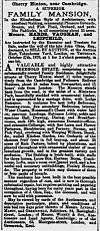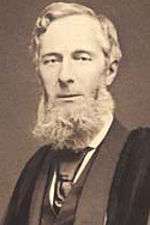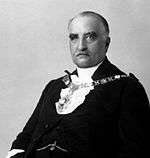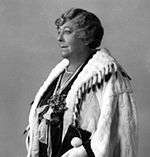Cherry Hinton Hall

Cherry Hinton Hall is a small house and park in Cherry Hinton, to the south of Cambridge, England. The house and grounds are owned and managed by Cambridge City Council.
The Hall is most well known for hosting the annual Cambridge Folk Festival, an ever-growing (in size and popularity) event that regularly draws thousands to the park. During the summer months, aside from hosting the Folk Festival, Cherry Hinton Hall is alive with predominantly young families enjoying the wide open grass spaces and the large duck pond which for many is the defining feature of the park along with the vast array of other wildlife living there. Many community activities also take place in the park, such as an archaeological and buildings survey carried out by children at the local St Bede's Inter-Church School, in 2007.
In 2007, Cherry Hinton Hall became home to Cambridge International School and later Holme Court School for dyslexics. The two schools are owned by the Sturdy family who also own Sancton Wood School in Cambridge.
In 2009 The Friends of Cherry Hinton Hall formed a new group of people concerned about the usage, environment, welfare and future of the park for the benefit of those who use it most. The friends want to act as advocates / champions of Cherry Hinton Hall grounds for the general public and act as a communication channel between the Council and public.
John and Mary Okes

John Okes was a surgeon at Addenbrookes Hospital in Cambridge. He was born in 1793 in Cambridge. His father was Thomas Verney Okes who was a doctor at the Addenbrookes Hospital. John served his apprenticeship with his father and later qualified at Cambridge University to become a very successful surgeon.[1]
In 1824 John married Mary Elizabeth Collin Martin who was the only daughter of Joseph Martin Esq. of Epping.[2] The couple lived in Cambridge for some time. Between 1831 and John purchased the old enclosures at Mill End Close, and the land at Mill End common then in 1839 he built Cherry Hinton Hall on this land.[3] John Okes outlined in a court case the improvements he made to the land. He said when he bought it there was only an old farm house on it. He built the Hall and then laid out the gardens. He made the following statement in 1854.
“I have laid out a considerable sum of money in planting. When I purchased the estate the Cherry Hinton Brook ran through it. The whole stream came from two springs skirting my property. In building the house I selected the spot with a view of making ornamental water. I cut a channel and made the lake in a great measure and have been every year enlarging it. I have stocked the stream for trout and dug a pond for pike".[4]
John died in 1870 and the Cherry Hinton Estate was sold to the Cambridge University and Town Waterworks Company. The next resident of the Hall was one of the Directors of the Waterworks Company.[5]
Charles and Eliza Balls

Charles Balls was born in 1810 in Cambridge. His father Henry Balls was a farm labourer. Charles at first became a shoe maker and later a leather merchant. He became very wealthy and in 1858 and 1859 he was the Mayor of Cambridge. He was later one of the Directors of the Cambridge University and Town Waterworks Company and at one time was Chairman of the Cambridge University and Town Gas Light Company.[6]
In 1836 he married Eliza Hopkins who was the same age as Charles. The couple lived in Cambridge and had eight children – six girls and two boys. Four of his daughters remained unmarried and when Charles and his wife Eliza came to live at Cherry Hinton Hall in the 1870s the four women came with them.[7] Eliza died in 1876 at Cherry Hinton Hall.[8] and Charles and his daughters lived at the Hall until 1888 when they moved back to Cambridge. Charles died in 1892 in his home Warkworth Lodge, Cambridge at the age of 82.
The next residents of Cherry Hinton Hall were Robert John Moffatt and his wife Eliza.[9] Robert was a General Manager of a bank in Cambridge and he lived at the Hall for several years. He was succeeded by Richard Thomas Lyons.,[10] a retired military doctor who lived there until about 1900. In 1902[11] Sir William Phene Neal came to live at the Hall and remained there for many years.
Sir William Phene Neal and Lady Eleanor Vise Neal


William Phene Neal was born in 1860 in Middlesex. His father was William Neal, a solicitor in London. In 1888 he too became a solicitor and practiced for over fifty years in London. In 1889 he married Eleanor Vise Beatley who was the daughter Thomas Gage Beatley, a wealthy ship owner. The couple lived in London for many years but they had no children. In about 1902 they bought Cherry Hinton Hall and it appears that William turned it into a dairy farm as reference is made in a trade magazine to the “Cherryhinton Hall Farm Dairy".[12]
In 1930 William became Lord Mayor of London and in the following year he received his knighthood. The London Gazette of 3 November 1931 contained the following notice.
“The King has been pleased, by Letters Patent under the Great Seal of the Realm, bearing date the 29th instant, to confer the dignity of a Baronet of the United Kingdom upon Sir William Phene Neal of Cherry Hinton in the County of Cambridge, Knight, Lord Mayor of the City of London, and the heirs male of his body lawfully begotten.”
In the 1930s the Hall and surrounding land was purchased by the Cambridge City Council and they still own it today.
References
- ↑ Rook, Arthur et al 1991“The History of Addenbrooke's Hospital, Cambridge”, p. 86. Online reference https://books.google.com/books?id=jEdsk0SYavEC&pg=PA86&dq=okes+%22addenbrooke's+hospital%22&hl=en&sa=X&ei=4G7wUubnFMfEkQXIwoCoDQ&ved=0CCsQ6AEwAA#v=onepage&q=okes%20%22addenbrooke's%20hospital%22&f=false
- ↑ Cambridge Chronicle and Journal - Friday 03 September 1824, p. 3.
- ↑ ‘Cherry Hinton: Manors and other estates', A History of the County of Cambridge and the Isle of Ely: Volume 10: Cheveley, Flendish, Staine and Staploe Hundreds (north-eastern Cambridgeshire) (2002), pp. 106-109. URL: http://www.british-history.ac.uk/report.aspx?compid=18807 Date accessed: 05 February 2014
- ↑ Cambridge Independent Press - Saturday 04 November 1854, p. 3.
- ↑ UK Census of 1881 and Cambridge City Council, “Cambridge Mayors”, p. . Online reference https://www.cambridge.gov.uk/sites/www.cambridge.gov.uk/files/documents/Cambridge_Mayors_1835-onwards.pdf
- ↑ Obituary in The Times (London, England), Nov 14, 1892; pg. 10
- ↑ UK Census of 1881
- ↑ Bury and Norwich Post - Tuesday 22 August 1876, p. 6.
- ↑ UK Census of 1891
- ↑ Calendar of the University of Scotland. Online reference https://books.google.com/books?id=WbY4AAAAMAAJ&q=lyons+%22cherry+hinton+hall%22&dq=lyons+%22cherry+hinton+hall%22&hl=en&sa=X&ei=sq70Uo2RCIXolAWTqoCICg&ved=0CDEQ6AEwAQ
- ↑ Chelmsford Chronicle - Friday 19 September 1902, p. 7.
- ↑ British Food Journal, 1919, p. 87. Online reference https://books.google.com/books?id=QY09AQAAMAAJ&q=%22cherryhinton+hall+farm+dairy%22&dq=%22cherryhinton+hall+farm+dairy%22&hl=en&sa=X&ei=p8H2UrjmMcWrkgXjm4CoCg&ved=0CDwQ6AEwAQ
External links
- Map sources for the Hall
- Cherry Hinton Hall at British History
- 2XL Cherry Hinton Hall Project
- Cambridge City Council
- Friends of Cherry Hinton Hall
Coordinates: 52°11′09″N 0°09′54″E / 52.18597°N 0.16494°E